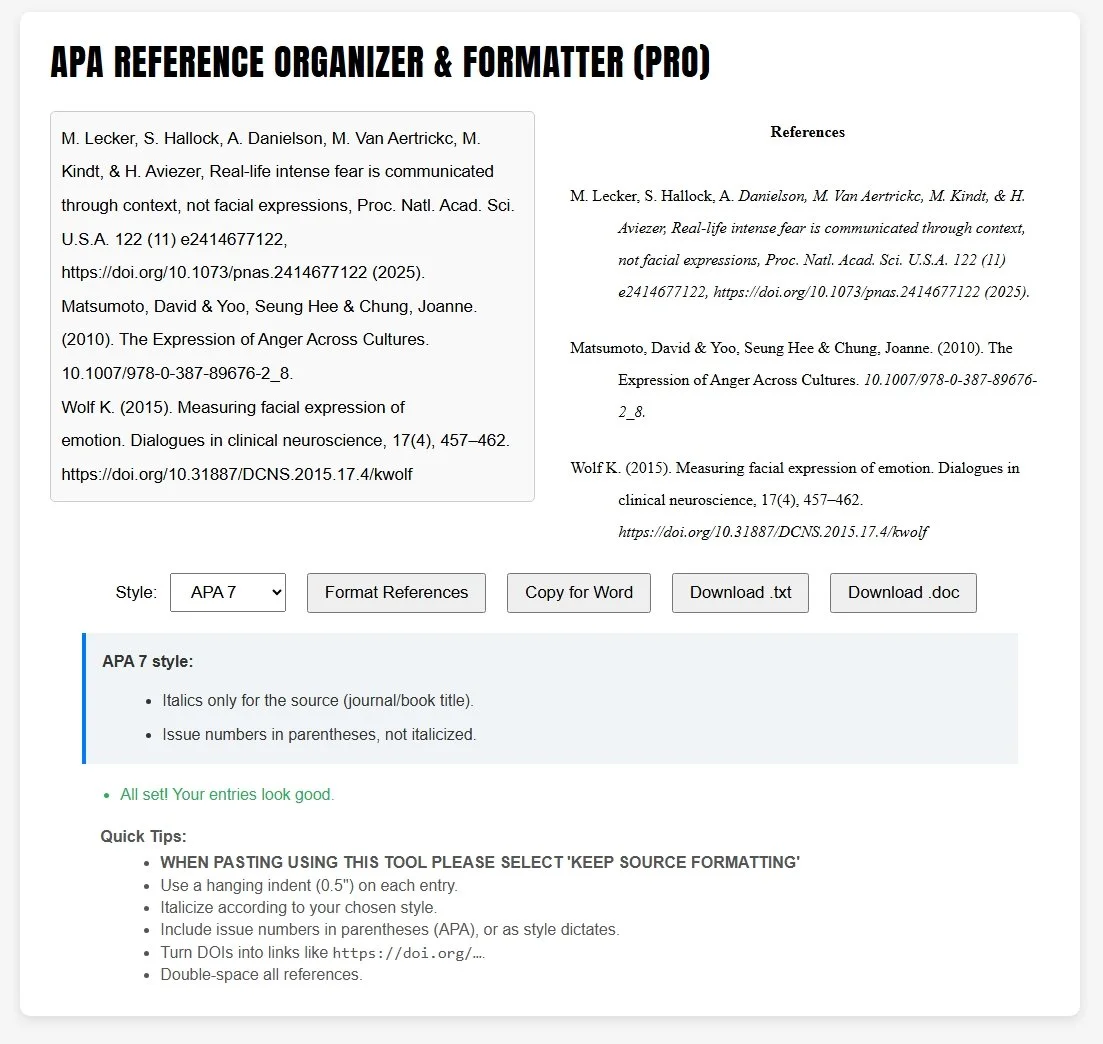Writing APA-Compliant Informed Consent & Debriefing Forms (Made Simpler)
When you're designing a psychology study, writing up your consent and debrief forms isn’t just a bureaucratic step — it's an ethical requirement. But if you’ve never written one before, the process can be confusing, time-consuming, and surprisingly technical.
This guide will help you understand what goes into an APA-style Informed Consent and Debrief form, how to draft one manually, and how to simplify the process using an academic tool.
What Are Informed Consent and Debriefing Forms?
In APA-compliant research, participants must be given:
An Informed Consent Form before the study begins
A Debriefing Form after the study concludes
These documents ensure ethical transparency. They explain the study's purpose, any risks, how data will be handled, and participants’ rights — including the right to withdraw at any time.
How to Write an Informed Consent Form (Manually)
Here’s what to include:
✅ Key Elements:
Study Title
Researcher Info — name, affiliation, contact, and ethics board contact
Study Purpose — a clear, jargon-free summary
Procedures — what participants will do
Duration — how long the study will take
Potential Risks — physical or psychological discomforts
Confidentiality Statement — explain if data is confidential, anonymous, or limited
Data Retention — how/where data is stored and for how long
Voluntary Participation — the right to withdraw
Compensation Info
Signature Lines — for printed name, signature, and date
Here’s a simplified example:
Confidentiality: Your data will remain confidential and will only be reported in anonymized form. All files will be stored on a password-protected university server.
How to Write a Debriefing Form
This is where you explain:
The true purpose of the study (especially if any deception was involved)
How data will be used
Support resources (e.g. counselling or follow-up contact)
For studies involving deception:
This study involved temporary withholding of information to preserve research integrity. The actual aim was to examine...
Participants should also be reminded they can withdraw their data, especially after learning the true aim of the research.
The Problem? It’s a Lot to Format & Structure
Doing all of this manually takes time — and formatting it to APA standards (e.g. double-spacing, formal language, print-ready output) adds another layer of effort.
That’s where a digital tool can really help.
A Better Way: Generate APA-Style Forms Automatically
The Informed Consent & Debriefing Form Generator (Pro) is designed specifically for psych students preparing ethics submissions or participant materials.
You just fill out your study info — and it:
📝 Builds fully formatted, APA-aligned Consent & Debrief forms
💬 Adds rich content with bold, italics, lists via intuitive text editors
📄 Lets you copy, print, or download the final output in RTF (Word-compatible)
🧠 Automatically adapts confidentiality type, deception logic, and signature lines
It’s not a template — it’s a smart builder that makes writing ethically robust documents easier and faster.
When to Use This Tool
Use it when:
You're submitting a proposal to an ethics committee
You need polished forms for participant use
You’re managing multiple studies or tweaking versions
You want to avoid formatting stress or second-guessing your content
It still requires you to understand what you're writing — but it handles structure, language, and formatting so you can focus on clarity and ethics.
Simply Put
Writing APA research forms shouldn’t feel like another research project. Now that you understand the structure and requirements, use your time wisely: draft your content, and let the generator handle the heavy lifting.
👉 Try the Consent & Debrief Generator Pro
References
Purdue Online Writing Lab. (n.d.). APA formatting and style guide (7th edition). Purdue University.










